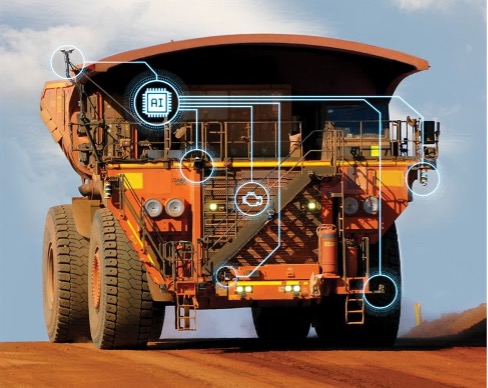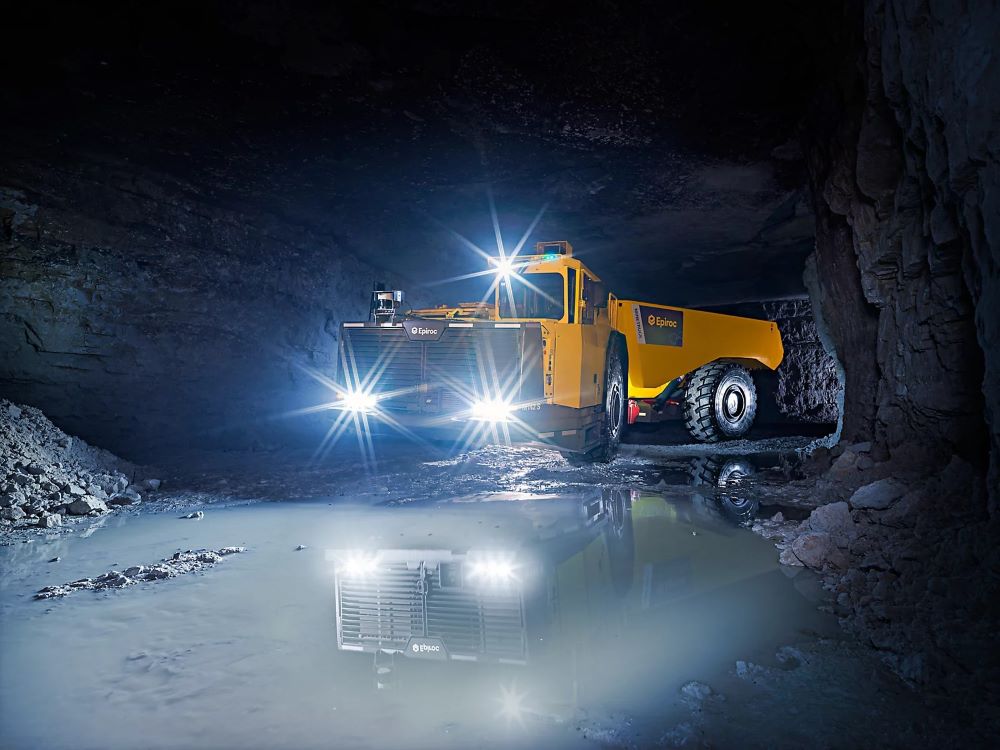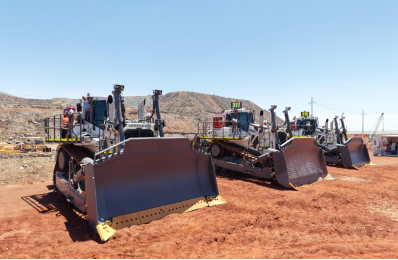The potash project: Thailand’s first underground mine
Thailand’s new Minerals Act, which allows mining below 100 m depth without the property owner’s consent, is being put to the test with the government considering its first mining lease application to develop a high-grade potash deposit.
Asia Pacific Potash Corp. (APPC), a subsidiary of Canadian-based Asia Pacific Resources, submitted its mining lease application recently to develop the Udon potash project, Thailand’s first underground mine, located in the northeastern portion of the country, about 50 km from the Laos border.
APPC’s CEO John Bovard is quietly confident the mining lease will be granted, however, not without more questions being asked and more answers given to satisfy the project’s opponents. These critics cite environmental and social concerns including tailings disposal, water management (in an area that can experience extreme flooding or extreme drought), subsidence and salinization of the surrounding ground. These potential problems could ruin this predominantly subsistence rice-growing area.
Since the mining lease application was submitted in late May, opponents to the project’s development have increased their lobbying efforts. Much of the information presented by these opponents to government officials or reported in the media is either ill-informed or unsubstantiated and used as a scare-mongering tactic.
Despite the few who have pledged to block development of the mine at whatever cost, many appear to be on side. The va-rious levels of government in Thailand, industry and even a good proportion of local villagers around the mine site see huge benefits in developing a potash mine. Udon is at the heart of the Asian market, which is forever hungry for high-grade fertilizer to sustain good crop production.
A test case for Thailand
The Udon potash project is being watched closely by Canadian, US, European and Australian miners as a test case whether mining projects have a future in this Asian country used to more ad hoc mining than the modern day practices of today’s technologically advanced industry.
“We know we can do this successfully and development of the Udon potash mine will give other investors the confidence to enter into long-term investment arrangements in Thailand,” Bovard said. Furthermore he adds, “We are going to be a case study for foreign investment in Thailand, especially for underground mining, and we want to show how a sustainable new business can be established in a country with no underground mining experience.”
APPC’s mining lease application includes four leases covering a total area of 3,600 ha. This will allow the development of an underground mine covering approximately 2,500 ha.
During the past 10 years, APPC has spent US$55 million on exploration activities, feasibility studies and a much-revised environmental impact assessment to address all environmental issues including detailed plans of mine and processing design. The company has invested the money in good faith undertaking all technical evaluations, and shouldered all the exploration risk to bring this world-class deposit to development stage.
Protection from subsidence
The Udon potash project is a world-class, shallow sylvinite deposit averaging 24% K2O grade and 3.7 m in thickness. It will be mined by conventional room and pillar techniques, and tailings will be returned underground via a hydraulic slurry backfilling system. Current mine planning sets the mine life at 22 years, although there is the potential for this to push to 50 years as further drilling and analysis is conducted on the Northern orebody.
Subsidence rates at the Udon South potash mine are expected to be similar to those in Canada. The maximum level of subsidence projected for the Udon South mine over the mine life will be less than 70 cm, and it will occur very gradually. There will be no differential settlement and no noticeable impact on the lives of people living above the mine.
Of particular significance to the mine project will be the implementation of a hydraulic slurry system that will return tailings to the underground and give the underground workings further strength and stability after mining.
APPC vice-president of operations Matthew Blackwell said the system used in German potash mines has been shown to be particularly effective in those operations and modeling had shown its application would be equally as successful at the Udon potash project.
“Tailings will be returned from the surface facilities back to the underground workings as a saturated slurry, rather than being conveyed as a dry, sand-like substance,” Blackwell said.
“This system has two very significant benefits. Firstly, it means that there will be no tailings on the surface and all waste products will be returned underground where it originally came from. Secondly, by adding moisture to the waste product means that the backfill tailings will now support the roof of the mine better than the previous dry proposal.”
In a commitment to continually improve technologies to be used at the Udon potash project, APPC has continued with extensive geological modeling work of its site and improved mine design plans to meet strict international standards of mining and processing and to further allay environmentalists’ fears about the project. It has also continually monitored seasonal environmental changes to water supply, and to ensure the mine’s operations would not affect nearby villages’ access to water. It is estimated about 1,500 villagers are located within the area covered by the mining lease and none will be affected by the underground mine as it will not impact on their current lifestyles.
Low salt emissions
Salt emissions from the Udon potash project will be a maximum of 230 mg/m3, less than half Canada’s published standards of 570 mg/m3. Thailand does not yet have standards for salt emissions, however, the conditions imposed on the government’s ASEAN project (a low-grade, undeveloped potash project, which is partly owned by a group of southeast Asian governments) for maximum salt emissions were in line with Canadian standards.
Among methods to be incorporated in the Udon project design to control salt emissions are:
Combinations of dry cyclone/wet venturi and impinger/wet venturi scrubbing systems will scrub all air emitted from the plant to ensure clean, acceptable air is released into the atmosphere.
All processing equipment and conveyors on site will be enclosed.
Monitoring equipment will be set up around the project area.
If monitoring shows that dust is being created from the tailings pile, water sprinklers will be used on the tailings pile if required. However, because damp salt is piped to the tailings pile, it tends to form a hard crust and it is not easily blown about by wind.
All brine ponds, salt stockpiles and evaporation ponds will be surrounded by an engineered soil berm.
Of particular significance in eliminating any possible salt contamination of ground soils or groundwater will be the double lining of the brine storage ponds with a 2-mm high-density polyethylene (HDPE) liner and a 1.5-mm HDPE liner interspaced with drainage pipes and leak detection. Finally monitoring wells coupled with interceptor wells will mitigate any unlikely failure of both lining systems.
Such a project can bring enormous prosperity to one of Thailand’s poorest regions and open the doors to greater foreign investment and exploration within Thailand, but it needs to be managed responsibly and all environmental issues addressed before construction starts.
“A country like Thailand is currently in a state of transition where the practices of yesterday are no longer tolerated but the big, development projects of tomorrow, like ours, are viewed with suspicion because of the abuses of the past.”
Bovard says he and his senior management staff are committed to maintaining the highest environmental standards and have proved this in previous roles this senior management team has held with other mining company projects.
Management is now made up of senior people who have built and operated fertilizer plants
in Australia and who have also held strong links with Thailand through other work undertaken in the country. CEO John Bovard was involved with the construction of Australian company Western Mining’s fertilizer plant in Mount Isa. He was also involved in the construction of aid projects in southern Thailand during the 1970s. Vice-president of operations Matthew Blackwell has worked on various mining projects in Australia. Vice-president of external affairs Vorapot Phokeo comes with extensive background in community relations work with previous employer Shell, and vice-president of engineering and development Keith Crosby of Canada is an international specialist in evaporite geology.
Bovard says APPC is committed to following best-practice international standards, because, while it is a Thai-based company, its major shareholder is Canadian-based Asia Pacific Resources.
Yolanda Torrisi is a journalist specializing in mining based in Orange, Australia. She can be reached at yolandat@optusnet.com.au.





Comments
John P. Steele
APPC’s Udon Potash project is not Thailand’s first underground mine. The first underground mines of modern standards are Kanchanburi Exploration and Mining (KEMCO)’s two lead/zinc/silver mines (Song Tho and Boh Yai)in Kanchanaburi Province of Thailand which began production in 1976 and produced until 2002 when Khun Thani, the owner got sick and ultimately died in 2005. These two mines are being returned to production by Khun Thani’s son Pornarret Klipbua with a partner from Canada named Southeast Asia Mining Corporation.
John Steele
081-819-9085